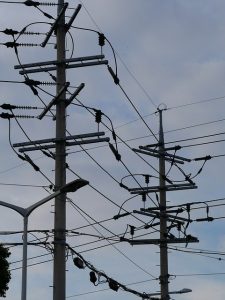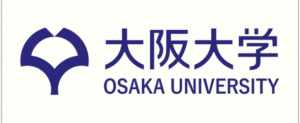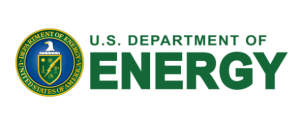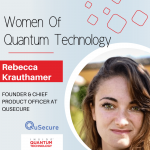Quantum News Briefs August 2: Infleqtion’s miniMOT V2 named Silver Honoree by 2023 Laser Focus World Innovators Awards for advancing quantum research, education, and workforce development; Quantum computing can help utilities become more reliable; Are quantum computers the future of genome analysis? + MORE

Quantum News Briefs August 2:
Infleqtion’s miniMOT V2 named Silver Honoree by 2023 Laser Focus World Innovators Awards for advancing quantum research, education, and workforce development
 Infleqtion, the world’s quantum information company, today announced that its miniMOT V2, a compact off-the-shelf trapped atom vacuum system, was recognized among the best by the 2023 Laser Focus World Innovators Awards. This recognition highlights the miniMOT V2’s significance in advancing quantum research, education, and workforce development. Quantum News Briefs summarizes.
Infleqtion, the world’s quantum information company, today announced that its miniMOT V2, a compact off-the-shelf trapped atom vacuum system, was recognized among the best by the 2023 Laser Focus World Innovators Awards. This recognition highlights the miniMOT V2’s significance in advancing quantum research, education, and workforce development. Quantum News Briefs summarizes.
The miniMOT V2 is equipped with an intuitive user interface, offering users greater control over critical system parameters, ultimately enhancing the flexibility of neutral atom experiments with rubidium (Rb) or cesium (Cs) atoms. Unlike traditional bulky vacuum equipment, the miniMOT V2 eliminates the complexities of setup, enabling researchers, students, and application developers to focus on their work and achieve results faster.
Dr. Chuck Williams, Product Manager for Infleqtion’s Quantum Cores business, underscored the miniMOT V2’s significance in advancing quantum research, saying, “As the quantum industry matures, we continue to see the need for commercial products that enable researchers, scientists, educators, and application developers to quickly execute their experimental goals and meet their product development milestones. The miniMOT V2’s new design and features provide users with even greater flexibility to create and control quantum matter within hours, not months.” Click here to read the complete August 1 news release.
Quantum computing can help utilities become more reliable
 The ability to consistently provide reliable, affordable power is strained by the complexity and consequences of catastrophic storms, record-setting cold, and lethal heat waves. In many communities, extreme weather events are pushing infrastructure to its breaking point. Implementing changes to accommodate new energy sources and customer preferences is challenging when the grid itself is in need of modernization. Moreover, as utilities deploy additional technology, such as sensors, they will need greater computational power to harness an increased influx of data.
The ability to consistently provide reliable, affordable power is strained by the complexity and consequences of catastrophic storms, record-setting cold, and lethal heat waves. In many communities, extreme weather events are pushing infrastructure to its breaking point. Implementing changes to accommodate new energy sources and customer preferences is challenging when the grid itself is in need of modernization. Moreover, as utilities deploy additional technology, such as sensors, they will need greater computational power to harness an increased influx of data.
Rima Oueid, senior commercialization executive at the U.S. Department of Energy’s Office of Technology Transitions, echoed the importance of near-term applications development at a Center for Strategic and International Studies (CSIS) event. She suggested the grid could provide an opportunity to create a sandbox focused on optimization and contingency analysis. In addition, a recent report from the Quantum Economic Development Consortium (QED-C), a federally established and supported consortium of leading industry stakeholders, identified cases in the electric sector where quantum applications could have the highest impact. They included:
■ Fault Prediction. Quantum annealing, quantum neural networks, and quantum generative adversarial networks can help utilities better predict energy grid failures, which allows them to fix problems before they occur.
■ Enrgy Market Optimization. Quantum computers can determine when to switch on power generators and when to leave them idle. This would help minimize costs while meeting customer demand.
■ Integrated Planning and Optimization for Reliable and Resilient Grid. Quantum computers can balance distributed generation, future energy sources, and placement of equipment, which will increase grid resilience.
Forward-thinking utilities and regulators are exploring how today’s quantum computing technology can be integrated with classical computation to help solve challenging problems. According to E.ON, one of Europe’s largest electric utility service providers, quantum technology can modernize an outdated grid to effectively integrate intermittent renewable generation sources
Click here to read August 1 PowerMag in-entirety.
Are quantum computers the future of genome analysis?

DNA sequencing technology, i.e., determining the order of nucleotide bases in a DNA molecule, is central to personalized medicine and disease diagnostics, yet even the fastest technologies require hours, or days, to read a complete sequence. Now, a multi-institutional research team led by The Institute of Scientific and Industrial Research (SANKEN) at Osaka University, has developed a technique that could lead to a new paradigm for genomic analysis. Quantum News Briefs summarizes.
In a study recently published in the Journal of Physical Chemistry B, the researchers aimed to use a quantum computer to distinguish adenosine from the other three nucleotide molecules. Using quantum encoding to identify single nucleotide molecules is a necessary first step toward the ultimate goal of DNA sequencing, and it’s this problem that the researchers sought to address.
“Using a quantum circuit, we show how to detect a nucleotide from only the measurement data of a single molecule,” explains Masateru Taniguchi, lead author of the study. “This is the first time a quantum computer has been connected to measurement data for a single molecule, and demonstrates the feasibility of using quantum computers in genome analysis.”
The researchers used electrodes with a nanoscale gap between them to detect single nucleotides. The output of current versus time for the adenosine monophosphate nucleotide differed from that of the other three nucleotides. This is because the conduction path of electrons between the nucleotide and the electrodes depends on the chemical architecture of the nucleotide. This is the basis for designing a quantum gate, which that serves as a molecular fingerprint for each nucleotide.
This work has broad and exciting potential applications: advances in drug discovery, cancer diagnosis, and infectious disease research are a few examples of what is expected with the advent of ultra-fast genome analysis. Click here to read the July 31 Eureka Alert announcement in-entirety.
DOE announces $11.7M for research on quantum computing
 The U.S. Department of Energy (DOE) announced $11.7 million in funding on July 27 for six collaborative projects to improve our understanding of whether, when, and how quantum computing might advance the frontiers of computational science.
The U.S. Department of Energy (DOE) announced $11.7 million in funding on July 27 for six collaborative projects to improve our understanding of whether, when, and how quantum computing might advance the frontiers of computational science.
Projects explore the limitations of the noisy, intermediate-scale quantum processors available today and aim to develop tools for assessing whether a particular quantum processor may be able to advance the frontiers of computational science even in the absence of formal error correction on the device.
The projects were selected by competitive peer review under the DOE Funding Opportunity Announcement “Quantum Testbed Pathfinder.”
Total funding is $12 million for projects lasting up to four years in duration, with $4.8 million in Fiscal Year 2023 dollars and outyear funding contingent on congressional appropriations. The list of projects and more information can be found on the ASCR program website. Click here to read announcement in-entirety.
Sandra K. Helsel, Ph.D. has been researching and reporting on frontier technologies since 1990. She has her Ph.D. from the University of Arizona





















